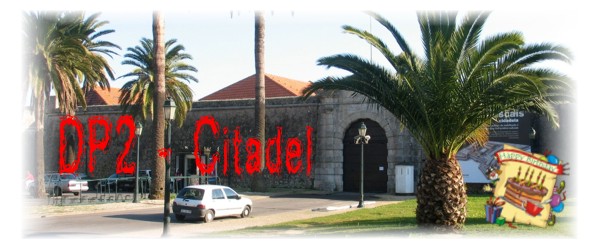
With its small picturesque beaches
and peaceful fishing-boat-bobbing waters, Cascais is far removed
from the hustle and bustle of nearby Lisbon. Once a small village,
the town has grown in size and popularity in recent years to become
one of the most attractive resorts on the capital's coastline. It
is a sophisticated place with many elegant shops and a relaxed,
laid-back atmosphere. A wide variety of bars, cafés and restaurants
cater for the throngs of summer holidaymakers, who fill up the
town's main
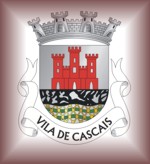 square by night after circulating through the
narrow lanes and upmarket shopping arcades during the
evening.
square by night after circulating through the
narrow lanes and upmarket shopping arcades during the
evening.
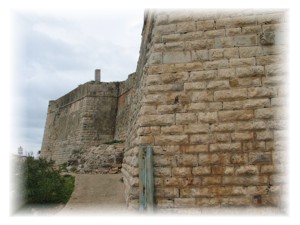
A brief
history of Cascais (and Estoril)
The picturesque towns of Estoril and
Cascais with their pretty little palaces overlooking the sea have
been inhabited from the remotest ages. From various interesting
finds, it is known that Paleolithic man lived there (e.g. Talaíde;
“Alto do Cabecinho” (Tires) and south of the “Moinhos do
Cabreiro”), and it is believed Neolithic people lived in local
caves 4000 years old (e.g. natural caves in Poço Velho; Cascais and
artificial caves such as the Alapraia caves; see also
DP1 –The five sisters .
There is also much evidence from the Roman period, dating from 1
AD. Villas have been excavated and inscriptions found of family
names, names of the Gods they worshipped and names chosen for their
sons. Also names from the time of the Arab occupation can be found.
Ibne Mucane was born in Alcabideche and it was he who made the
first literary reference to the introduction of windmills into
Europe. He was an Arab poet and is remembered by a monument
situated near the windmills on the road out of the village leading
to the Autodrome. Reconquering the land from the Moors in 1147, the
people of Cascais dedicated their energies to fishing. It is
believed the name Cascais developed from the word "cascas", meaning
"shells", probably referring to the piles of empty sea shells. This
connection with the sea gave its inhabitants the chance to
 request and be favourably considered, for the
priviledge of self-government, thus severing its previous
connection with Sintra. In 1364, King Pedro I granted the
title of municipality on Cascais, but it only came into effect
in 1370 when King Fernando gave the castle to Gomes Lourenço
de Avelar. From then on, Cascais became a lookout for Lisbon
in the great maritime era of discovering new worlds. It was
the first place the navigators saw when they returned from
long and adventurous voyages seeking their homeland, and the
last when they set out on voyages looking for African
treasures, oriental spices, sugar and later gold from
Brazil. It was for this reason that in the time of King
Manuel I during the middle of the XVI century, when Portugal´s
discoveries were at their height, that Cascais was one of the
first places to have a lighthouse. It was situated exactly
where the Guia lighthouse is today. The strategic position of
the bay is of great importance. It was here, in 1560, that the
Duke of Alba, in the service of King Filipe II of Spain,
landed to take Portugal. It was King Filipe´s intention to
bring the court to Lisbon and rule the two monarchies from
there. Nicolau de Oliveira wrote much open praise about the
amenable Cascais climate and the long life of its people.
Suffering under Hispanic rule, the people of Cascais actively
participated in restoring Portugal´s independence and from
1640; they built many fortresses along the coast which are
still in use today for a variety of reasons. The famous
earthquake on November 1st 1755, destroyed much of Lisbon and
interrupted Cascais' prosperity, reducing houses, churches and
convents to ruins. Cascais remained neutral during the
Napoleonic Wars and Junot, commander of the 1st invasion, set
up his headquarters in the town. In 1808, he was forced to
sign the surrender. The 19th infantry regiment, under the
patronship of St. Anthony, departed from the Citadel in 1810
for the Battle of Buçaco - the decisive battle in stopping
Napoleon. St. Anthony´s statue is still worshipped in the
Citadel. It was in Cascais during the latter part of the XIX
century, that the Royal Family first began to bathe. It was a
custom which was becoming popular in Europe and Cascais was an
ideal place owing to its mild climate. Over the years, many
important families have made Cascais into a cosmopolitan town.
From the 1930s, both Cascais and Monte Estoril have supported
Estoril as the flagship of Portuguese tourism. The area was
initially called the Sun Coast but is now known as the Estoril
Coast.
request and be favourably considered, for the
priviledge of self-government, thus severing its previous
connection with Sintra. In 1364, King Pedro I granted the
title of municipality on Cascais, but it only came into effect
in 1370 when King Fernando gave the castle to Gomes Lourenço
de Avelar. From then on, Cascais became a lookout for Lisbon
in the great maritime era of discovering new worlds. It was
the first place the navigators saw when they returned from
long and adventurous voyages seeking their homeland, and the
last when they set out on voyages looking for African
treasures, oriental spices, sugar and later gold from
Brazil. It was for this reason that in the time of King
Manuel I during the middle of the XVI century, when Portugal´s
discoveries were at their height, that Cascais was one of the
first places to have a lighthouse. It was situated exactly
where the Guia lighthouse is today. The strategic position of
the bay is of great importance. It was here, in 1560, that the
Duke of Alba, in the service of King Filipe II of Spain,
landed to take Portugal. It was King Filipe´s intention to
bring the court to Lisbon and rule the two monarchies from
there. Nicolau de Oliveira wrote much open praise about the
amenable Cascais climate and the long life of its people.
Suffering under Hispanic rule, the people of Cascais actively
participated in restoring Portugal´s independence and from
1640; they built many fortresses along the coast which are
still in use today for a variety of reasons. The famous
earthquake on November 1st 1755, destroyed much of Lisbon and
interrupted Cascais' prosperity, reducing houses, churches and
convents to ruins. Cascais remained neutral during the
Napoleonic Wars and Junot, commander of the 1st invasion, set
up his headquarters in the town. In 1808, he was forced to
sign the surrender. The 19th infantry regiment, under the
patronship of St. Anthony, departed from the Citadel in 1810
for the Battle of Buçaco - the decisive battle in stopping
Napoleon. St. Anthony´s statue is still worshipped in the
Citadel. It was in Cascais during the latter part of the XIX
century, that the Royal Family first began to bathe. It was a
custom which was becoming popular in Europe and Cascais was an
ideal place owing to its mild climate. Over the years, many
important families have made Cascais into a cosmopolitan town.
From the 1930s, both Cascais and Monte Estoril have supported
Estoril as the flagship of Portuguese tourism. The area was
initially called the Sun Coast but is now known as the Estoril
Coast.
The
Citadel
The 16th-century Fort of Cascais
known as the Citadel (“Cidadela”) was built to protect the Bay of
Cascais. It is part of a whole line of fortresses along the Tagus
estuary which were built to protect Lisbon from being invaded.
Previously occupied by the armed forces, the Citadel has been
leased to the municipality for a period of 35 years. Published
newspaper reports indicate that by 2008, an investment of 10 to 15
million Euros will convert the Citadel into an arts centre, an
archaeology museum and a
hotel.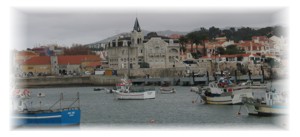
There are beautiful views of the
fortress and photography aficionados will be rewarded if you wait
for certain times of the day to take your pictures.
Other places of interest in
Cascais
- Cascais' 16th century
parish church has
carved and gilded woodwork round the altar and walls panelled with
Portuguese (azulejo) glazed tiles. There are also paintings by some
of Portugal's most famous artists, most notably Josefa de
Óbidos.
- Located close to the sea, the
Cascais Municipal
Museum housed in the Palace of the Counts of Castro
Guimarães features rare Indo-Portuguese-style furniture, a library
with over 25,000 books (including some 17th century editions and a
1505 illuminated manuscript) and a small zoo.
- The
Cascais Sea Museum
illustrates the town's close association with the Atlantic Ocean
with a vast range of related exhibits including old maps, articles
of fishermen's clothing, model boats and pieces of treasure
salvaged from ships wrecked in the surrounding waters.
- The
Palmela Park, old
property owned by the counts of Palmela is situated along the
Boqueiros stream. Here the valley is deep and many species of large
trees grow making this an ideal hot summer’s day getaway location.
The auditorium (“ Auditório Fernando Lopes Graça” ) within the park
hosts many cultural events in the summer months.
-
Marechal
Carmona Park results from the unification of the
gardens of the Palace of the Counts of Castro Guimarães and the
property of the Viscount of Gandarinha. Here, the whole family can
enjoy a relaxed stroll and make use of the park’s ample grass areas
to let the kids run around and bask in the sun.
- The
marina.
- Nearby .
Boca do Inferno 3 km
west of Cascais is an unusual crater-shaped rock formation
constantly under attack from the pounding Atlantic waves. Further
along the coast is the magnificent sandy beach of
Guincho, a favoured
spot among surfers and windsurfers from all over the
world.
The
cache
The idea of this cache is not simply
to tally up your statistics but to take the whole family on a
stroll through
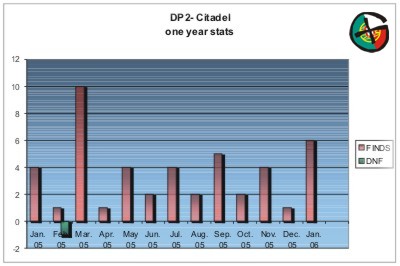 Cascais and enjoy the views of the coastline,
the fishing boats, the yachts, the monuments, the municipal
buildings, the museum, the lighthouses and the parks. So why
not come to Cascais, walk around the village, head for the
bay, see the fishing boats and local fisherman at work, stroll
up towards Marechal Carmona Park, visit the Cascais Municipal
Museum, then head towards the sea, hunt the cache, log your
visit and enjoy a cold beer or hot coffee along one the nearby
esplanades?
Cascais and enjoy the views of the coastline,
the fishing boats, the yachts, the monuments, the municipal
buildings, the museum, the lighthouses and the parks. So why
not come to Cascais, walk around the village, head for the
bay, see the fishing boats and local fisherman at work, stroll
up towards Marechal Carmona Park, visit the Cascais Municipal
Museum, then head towards the sea, hunt the cache, log your
visit and enjoy a cold beer or hot coffee along one the nearby
esplanades?
This cache is now one year old and it has been viisted by 47
cachers both locally and from abroad. It has enjoyed a fruitful
life even though it is right underneath the nose of Mr. Joe Public
and is situated in a busy drop off spot for incoming tourists. Even
so, it has only had 17 days of downtime due to a missing logbook
and some restauration work being carried out. It has enjoyed 46
founds and only one not found (stats untill January 22 of 2006).
Thanks for your continued
support.
Recommendations:
- Age for this cache:
0-100.
- Container is heavy; don’t drop it on
your foot!
- Cache site is VERY
PUBLIC, be VERY
DISCRETE.
- Container will only close propoerly
by lining up the two black lines.
- As container does not seal properly,
be careful in replacing log book and other stuff in the inner
zip-up plastic bag.
- Only very small gifts to
exchange.
- Don’t compromise cache location if
there are people around.
Happy hunting
and enjoy Cascais!
______________________________________________________________________________